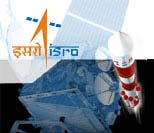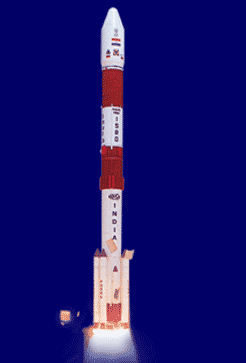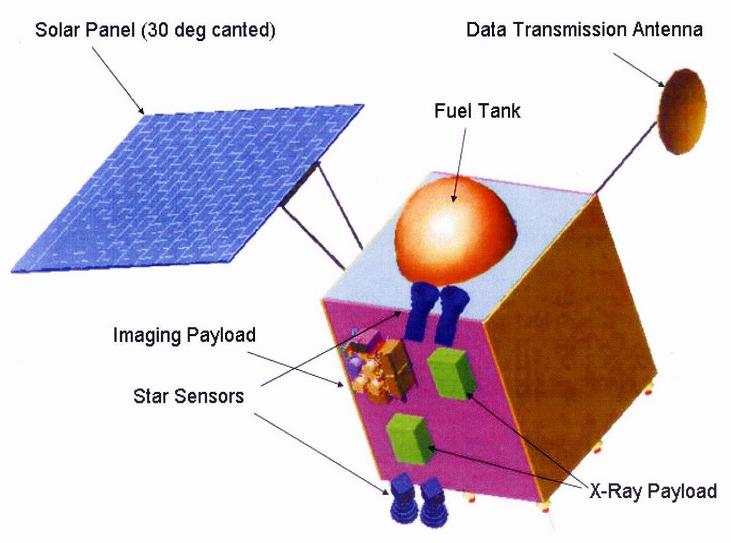India’s Space programme 2007 - Year-end Review
02 Jan 2008
 Introduction
Introduction
Indian space programme witnessed several major accomplishments and scaled newer heights in mastering space technology during the year. It is significant to note that the remarkable successes were the result of well-orchestrated programmes undertaken by the department aimed at achieving total self-reliance in this cutting edge technology solely through indigenous efforts and utilizing the expertise available within the organization.
Some of the recent, important developments, were the successful orbiting and recovery of a space capsule from the Indian soil using our own launch vehicle, launching of the state of the art remote sensing satellite Cartosat-2 with better than one meter resolution, launching of a satellite exclusively for an European customer under a commercial contract, successful ground testing of indigenously developed cryogenic upper stage and fabrication and installation of a large antenna for providing tracking and command support for deep space missions, in general, and Chandrayaan-I, India`s first un-manned lunar mission, in particular.
Launch Vehicle Programmes
The launching of Polar Satellite Launch Vehicle (PSLV-C7) on January 10, 2007 carrying our own 680 kg remote sensing satellite Cartosat-2, 56 kg LAPAN-TUBSAT satellite from Indonesia, 6 kg Pehuensat from Argentina and 550 kg Space capsule Recovery Experiment (SRE) aimed at establishing India`s capability to orbit and bring back to earth successfully heralded a new era in the launch vehicle and satellite technology development in the country.
 PSLV-C7 also demonstrated our capability to launch multiple payloads into different orbits precisely. Space capsule Recovery Experiment carried two experiments to conduct studies in micro gravity was launched into 485 km by 639 km orbit. SRE comprises aero thermal structure, spacecraft platform, deceleration and floatation systems besides the micro gravity payloads. After successfully accomplishing the mission the SRE was reoriented and de-orbited to splash down at the designated location in the Indian Ocean region on January 22, 2007.
PSLV-C7 also demonstrated our capability to launch multiple payloads into different orbits precisely. Space capsule Recovery Experiment carried two experiments to conduct studies in micro gravity was launched into 485 km by 639 km orbit. SRE comprises aero thermal structure, spacecraft platform, deceleration and floatation systems besides the micro gravity payloads. After successfully accomplishing the mission the SRE was reoriented and de-orbited to splash down at the designated location in the Indian Ocean region on January 22, 2007.
The precise splash down established India's capability to launch, control and accurately bring back a space capsule. The demonstration of SRE experiment has given confidence to undertake more complex manned missions into low earth orbit.
Closely following this was the launch of PSLV-C8 on April 23, 2007 carrying an Italian satellite AGILE into a low earth orbit. Considering the mission requirements, PSLV-C8 was launched in core-alone configuration which also proved the versatility of PSLV as the vehicle.
The Geosynchronous Satellite Launch Vehicle (GSLV-F04) was launched successfully on September 2 2007 carrying INSAT-4CR into the desired orbit. The launch of GSLV-F04 was significant as the previous flight GSLV-D3 had failed to accomplish the mission owing to a fabrication anomaly. The detailed failure analysis carried out established that the design of GSLV is robust and certain strict quality control measures needs to be enforced during fabrication and inspection. The successful launch of GSLV-F04 reinforced ISRO`s ability to look at failures critically and draw lessons.
The recent successful ground testing of the Cryogenic Upper Stage to be used in place of Russian cryogenic stages in GSLV was the crowning glory for ISRO. The cryogenic upper stage was tested for the full flight duration of 12 minutes and the test results fully met all the specified parameters. The development of cryogenic engines involves mastering materials technology, operating rotary pumps and turbines that run at 42,000 rpm at cryogenic temperatures. The successful testing has resulted in total self-reliance in launch vehicle technology.
Efforts to develop and launch the advanced version of GSLV, namely GSLV Mk III capable of putting 4 tonne payloads into geo-synchronous transfer orbit, is progressing well, with the establishment of necessary infrastructure at ISRO centres such as the casting of 200 tonne solid boosters etc.
The GSLV-Mk III uses heavy propulsion stages such as 200 tonne solid boosters, 110 tonne liquid stages and 25 tonne cryogenic upper stages.
The launch of GSLV Mk III is scheduled for 2008-09.
Research and development activities in semi-cryogenic propulsion stages, air breathing propulsion, re-usable launch vehicle technology is also being pursued vigorously in an effort to reduce launch costs.
Satellite programmes
The launching of a state-of-the-art remote sensing satellite Cartosat-2, the twelfth in the IRS series of satellites, which will provide panchromatic imageries with a resolution of better than 1 meter, onboard the PSLV-C7 will provide further fillip to the remote sensing application programmes in the country especially in the area of urban planning, water resources survey, crop acreage and prediction estimation projects.
INSAT-4B was successfully launched on an Ariane launch vehicle on 12 March 2007. INSAT-4B is the second satellite in the series in INSAT 4 series. INSAT 4B carries 12 high power Ku-band transponders and 12 C-band transponders and has augmented the Direct to Home (DTH) television services and other communication and TV services.
The launching of INSAT - 4CR on 2 September 2007 onboard GSLV-F04 with 12 high power Ku-band transponders has augmented TV broadcast services especially in the area of DTH services, Video Picture Transmission (VPT) and Digital Satellite News Gathering (DSNG).
The INSAT system currently has about 210 transponders providing telecommunication, TV broadcast and meteorological services to the country. Concerted efforts to augment the capacity to about 500 transponders by the end of 11th Five Year Plan have been initiated.
 Chandrayaan-1
Chandrayaan-1
India`s first un-manned lunar mission Chandrayaan-1 is targeted for launch during April 2008. Final integration and testing of the spacecraft is in progress. The spacecraft carries eleven payloads of which five are from India and six payloads from USA, Europe and Bulgaria. Chandrayaan – 1 spacecraft will be launched onboard India`s Polar Satellite Launch Vehicle.
The Chandrayaan-1 mission features a satellite orbiting the moon at an altitude of 100km for two years mapping the topography and the mineralogical content of the lunar soil. Chandrayaan-1 will also carry a Moon Impact Probe payload for demonstrating the technology needed towards accurate landing on the moon's surface.
India and Russia have signed an agreement on joint lunar research and exploration. The cooperation envisages Chandrayaan-2, a joint lunar mission involving a lunar orbiting spacecraft and a lander/rover on the moon's surface. Chandrayaan-2 will be launched using India`s Geo-synchronous Satellite Launch Vehicle (GSLV) in the time frame of 2011-12.
The design, development, fabrication and successful installation of a 32 meter antenna to provide tracking, command and telemetry support for the Chandrayaan mission in association with ECIL and BARC is a significant achievement for the country in the complex technology of large size antennas.
Lunar mission is a step towards our conquest for exploration of outer space and inter planetary missions. Towards this, India and Russia have signed a Memorandum of Understanding for joint development of Lunar rover and robotic arms to be used in the Chandrayaan-2 mission targeted for launch during 2011-12 time frame.
Manned Mission Programme
India's Manned Mission Programme is envisaged as a national effort to develop a fully autonomous orbital vehicle carrying 2-3 crewmembers to a 400km low earth orbit and safely return them to earth with ISRO playing the lead role.
ISRO has carried out a detailed study on the feasibility of undertaking indigenous manned space missions with an aim to build and demonstrate the capability for carrying humans to low earth orbit and their return back to earth.
It is planned to envisage the programme in about 8–10 years time frame.
Societal applications
The services offered by INSAT Satellites in the area of tele-education and telemedicine received further impetus. Today, in tune with the dreams of Dr Vikram A Sarabhai, the founding father of the Indian Space Programme, Edusat satellite network has about 30,000 classrooms connected to various academic institutions and universities.
Tele-medicine network facilities expanded further and about 223 hospitals and 41 super speciality hospitals are connected providing health care to citizens especially in rural areas to about 3,00,000 patients per year.
Combining the services from INSAT and Indian Remote Satellites, a new concept namely Village Resource Centre (VRC) has been operationalised. VRCs provide telemedicine, tele-education, adult education, health and family welfare programmes.
About 300 VRCs have been established in various states in the country.
Indian Institute of Space Science and Technology
Indian Institute of Space Science and Technology (IIST) was inaugurated on 14 September 2007 with the objective of offering high quality education in space science and technology to meet the growing demands of the Indian Space Programme.
The Institute offers a Bachelors degree in Space Technology with specialization in avionics, and aerospace engineering as well as Integrated Masters degree in applied sciences with special emphasis on space related subjects. The Institute started from the current academic year and 140 students from various parts of the country have enrolled for under graduate and masters courses.
The space programme in the country is poised for several major breakthroughs in the development of advanced technology needed for realization of the future launch vehicle and spacecraft missions in the coming years. Efforts to establish necessary infrastructure for casting large boosters, liquid propellant engines, heavy cryo-boosters and for development of advanced missions in the area of remote sensing, communications, navigational satellites and space science systems. Necessary ground infrastructure for providing mission support during launch phase and in orbit support for the planned missions is under realization.




















